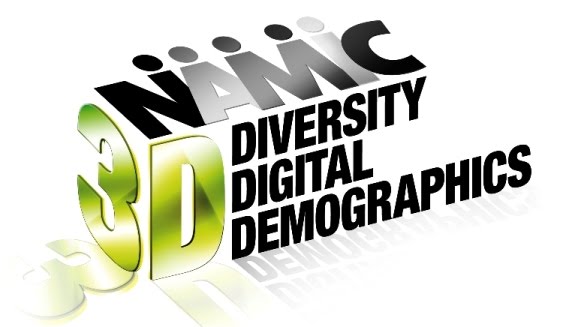Lets get tribal. In the world of social media, users form their own tribes. That was the topic of discussion at the Digital Media session Tuesday morning titled “Tribalization of Social Media.: How to Become a Chieftain.”
One issue that came up frequently was that there are few places where diversity rules as it does on the Internet.
An expert panel summoned the ancient concept of tribalization and applied it to the fluid, modern market of social media. I learned that social media IS tribalization, which was described as one of the oldest forms of government. People use social media to categorize themselves and to carve out their identities online and connect with those who are like-minded or have similar passions. Tribalization on the Internet is like a self-defined target audience.
Is social media the great equalizer? This is one of the most gripping questions asked at the Tribalization of Social Media session this morning. Smokey Fontaine, chief content officer for Interactive One led the session with relevant, sharp questions, such as this.
The panel was equally acute with their quick answers. Every panelist was an expert with deep knowledge of the subject. The lineup included Lisa Hsia, Digital SVP for Bravo Media/NBC Universal; Ed Moran, Director of Insights & Innovation; Technology, Media & Telecommunications Group and Deloitte Services, LP; Gene Pao, VP of New Media and International Development for Fuel TV; and Viveka Von Rosen, a social media coach and consultant.
The audience was so engaged, time flew by, and attendees hardly had time to admire the spectacular view of the Front Range and the Denver Skyline from the 37th Floor of the Atrium Tower.
I like the recurring theme of social media as a democratic organ. Online social interaction is wide open to almost everyone, regardless of income, social background, ethnicity or gender identity. Everyone’s voice can be heard and potentially make a difference. Social media is the voice of Everyman.
So what is the gist of tribalization? How can companies take advantage of such tribes?
Viveka Von Rosen alluded to the saying ‘Find out where the crowd is going and then get in front.’ I think that’s key in social media.”
Lisa Hsia mention a business class she took recently that dealt with the strategies of Napoleon Bonaparte. He knew the history and he always went to the front lines to watch what was going on so he could quickly adjust to what wasn’t working.
That’s why he won so many battles. Adaptability is key.
Being aware of the social media activity of tribes are your customers will make all kinds of companies more responsive to their customers. Companies that use this strategy will improve their business because they can be more responsive to their customers. Ed Moran gave an example he discovered of a gym that did what Napoleon would have done. The gym found out via social networking that women who had just had babies did not want to work out when the hardcore bodybuilders did. Previously the gym’s marketers had targeted that demographic as their key audience. In discovering that other groups, or tribes were staying away, the gym reached out to the women and started groups and offered them what they wanted.
Another topic that came up was that it’s not all about Facebook, or LinkedIn or Twitter. Viveka Von Rosen quoted Twitter’s cofounder, who said that “It’s not about Twitter. It’s about communication.” Those in the business -- and businesses like the cable industry that are intertwined and sometimes driven by social media postings -- must be aware of its Quixotic nature and its ever-changing avenues and technology.
A variable that doesn’t change, though, is that “You have to go where the people are,” in other words, find the community where your topic will be of interest lies, as Ed Moran and other panelist noted.
Even though the users tribalism themselves, companies need to go out and identify the tribes and fans who best identify with their companies.
“My allegiance is to what my viewers are using and what they are doing,” Lisa Hsai said.
Ed Moran agreed, saying “The tool will be different six months from now.”
The attendees were enthusiastic about the session. And not everyone in this session was in the cable industry. I found two nonprofit representatives who were looking for ways to improve their organizations through social media. One, Michael Tipton, of Denver’s urbangreenreport.org, said he has used social networking to identify companies that represent what his organization stands for. He gave the example of Nike, a company he “friended” because he likes their recycling policies … and that’s what his business is about … letting people know how to become more green.
Gene Pao agreed, saying that what companies people buy from, what clothes they wear, what cars they drive help define them … and their business.
Angell Fouther of The Denver Foundation, a nonprofit that raises money and distributes grants to other nonprofits and charities said her organization is very new to social media and came to get new perspectives.
“The biggest takeaway for me is that you have to go where the people are.”
Attendee Kevin McFall, of RedClayDigital, Tweeted on the topic of Tribalization the entire time he was there.
Robyn Mayer - NAMIC Blogger

No comments:
Post a Comment